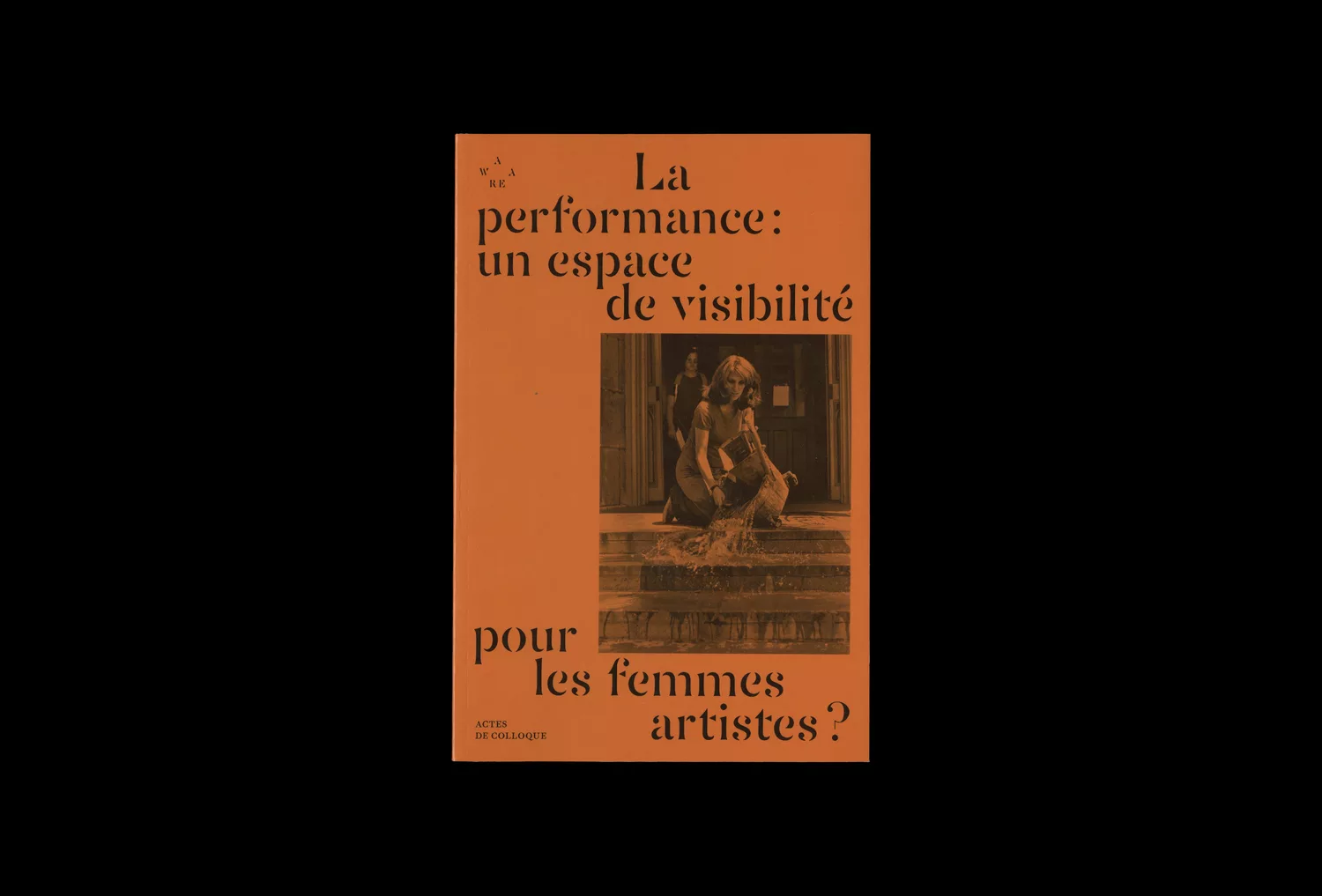Publications
This publication follows a conference that took place on May 14th, 2018 at the Beaux-Arts de Paris. Entitled, “La performance : un espace de visibilité pour les femmes artistes ?” [Performance: a place of visibility for female artists?], the conference was part of the interdisciplinary research programme “Visibilité et invisibilité des savoirs des femmes : les créations, les savoirs et leur circulation, XVIe-XXIe siècles” [Visibility and Invisibility of Women’s Knowledge: Creations, Knowledge and Circulation, 16th-21st century]. Led by Caroline Trotot in the heart of the Littératures, Savoirs et Arts (LISAA) research lab at the Université Paris-Est – Marne-la- Vallée from 2017-2018, this programme benefited from the support and active collaboration with the association AWARE: Archives of Women Artists, Research and Exhibitions, for both the conference and the present publication. One of the objectives was to study how creative work or the use of the body can give way to strategies of diversion allowing to question mechanisms of visibility and invisibility that regulate women’s knowledge. As a result, performance has become a field interweaving these aspects of the body and of the work of art, particularly since it has been largely invested by women throughout its history.
- “Cleaning is working” Camille Paulhan
- Beyond the Frame: Feminist Strategies in the Expanded Cinema of the 1960s and 1970s Maud Jacquin
- The Body in Performance: The Impossible Quest for Identity Thérèse St-Gelais
- Suffering Bodies and Transgressive Femininity in the Performative Works of Yvonne Rainer, Jo Spence and Hannah Wilke Johanna Renard
- The Performances of Gina Pane through the Prism of Apulian Tarantism: Between the Repressive Economy of Blood and the Visibility of Popular Feminine Rituals Janig Bégoc
- Counter Archives: Archaeological Ficttion of Embedded Submission Laboratoire de la contreperformance
The Body in Performance: The Impossible Quest for Identity
Thérèse St-Gelais
Abstract
As seen with several artists, the representation of the self that occurs through performance is an embodiment. From an illusory domestication of the body, to a stereotypically feminine response to imposed norms, what is sought after is the affirmation of “real lives”, and whose failure is inevitable if the goal is to move towards a true identity. It is common that the transgression of normative limits is executed in certain feminist actions. Yet, amongst many performers who have shown resistance to the prescribed representations of bodies and women, there are also some whose manifestations present ambivalence and obvious violence. Taking as examples the work of Nadège Grebmeier Forget (Quebecer) and Rebecca Belmore (Anishinaabe), this essay highlights images of the body and identity that challenge the norms of representation. In the case of both artists, they participate in a feminist resistance and agency that are critical of the construction of the self, knowledge and expertise —between the bodysubject that performs a quest for the self and another that reveals the violence present in the representation of women, buried in the feminist issues of a still lively reality.
Thérèse St-Gelais is a tenured professor of art history at the Université du Québec in Montreal. In 2012, she curated the exhibition Ghada Amer at the Musée d’art contemporain in Montreal. She has contributed to several catalogues, amongst which is that dedicated to Teresa Margolles (Montréal, Musée d’art contemporain, 2017). She has also contributed to several joint publications, such as Desire Change: Contemporary Feminist Art in Canada (Montreal, Kingston, London, Chicago, McGill-Queen’s University Press, 2017). She is a member of the Institut de recherches et d’études féministes (IREF) and of the Réseau québécois en études féministes (RéQEF).


